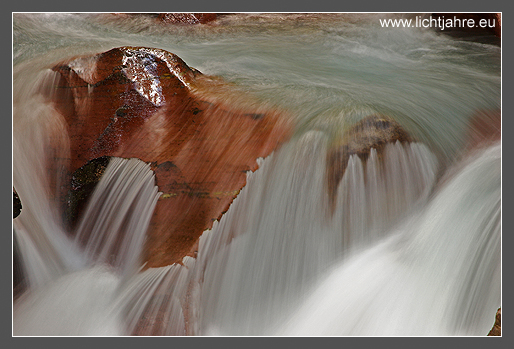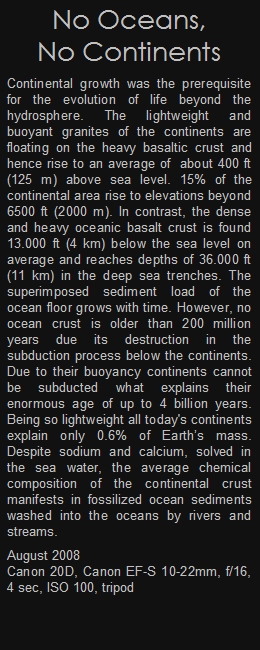

No Ocean, No Continents
Continental growth was the prerequisite for the evolution of life beyond the hydrosphere. The lightweight and buoyant granites of the continents are floating on the heavy basaltic crust and hence rise to an average of about 400 ft (125 m) above sea level. 15% of the continental area rise to elevations beyond 6500 ft (2000 m). In contrast, the dense and heavy oceanic basalt crust is found 13.000 ft (4 km) below the sea level on average and reaches depths of 36.000 ft (11 km) in the deep sea trenches. The superimposed sediment load of the ocean floor grows with time. However, no ocean crust is older than 200 millionen years due its destruction in the subduction process below the continents. Due to their buoyancy continents cannot be subducted what explains their enormous age of up to 4 billion years. Being so lightweight all today's continents explain only 0.6% of Earth’s mass. Despite sodium and calcium, solved in the sea water, the average chemical composition of the continental crust manifests in fossilized ocean sediments washed into the oceans by rivers and streams.
August 2008
Canon 20D, Canon EF-S 10-22mm, f/16, 4 sec, ISO 100, tripod




















